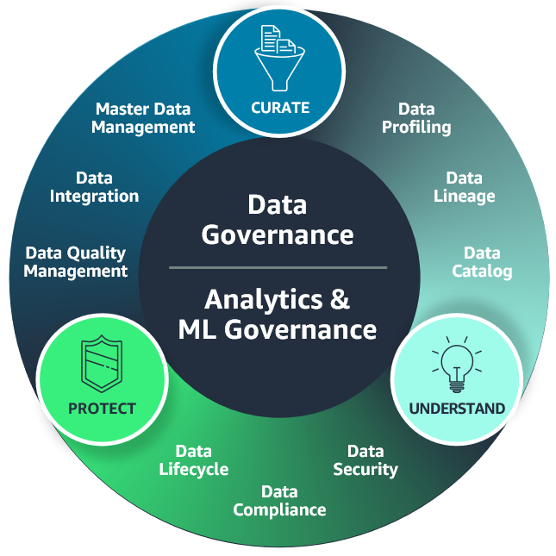- Products›
- Data lakes and analytics›
- Data governance with AWS
Data governance with AWS
Balance data access and control to accelerate data-driven decisions
Overview

Benefits of data governance with AWS
Balance data access and control by working backwards from your business initiatives
Address data governance challenges with AWS
Due to siloed lines of business (LOBs), data stored in multiple formats (open or proprietary) and data stored in multiple storage devices, businesses have a limited view of the totality of data available to them. That blind-spot puts unaccounted-for data at governance risk.
Poor data governance can result in sprawl of a different kind—the creation of data copies to facilitate data access. As data is frequently copied, its reliability as a business’ source of truth degrades. This practices can sometimes result in copies of the data everywhere—perhaps slightly modified—which can can manifest as disconnected and ungoverned data lakes across the LOBs.
Even when a business’ totality of data is curated and accounted for, businesses still struggle to understand what that data means because there’s very little semantic information to explain the data.
As the number of data users across an organization grow, it's difficult to find and share the best data assets that will drive decisions for targeted business initiatives.
As companies manage more data across more users, ensuring the right users inside and outside the organization have access to the right data becomes increasingly difficult to scale and maintain.
Access that is too restrictive can slow business decision-making. Access that is too lenient can introduce risk.
Data Governance with AWS Master Class
How can data governance accelerate your business initiatives? How can you use existing enterprise capabilities to build your data governance roadmap and secure funding? In this data governance master class, Kevin Lewis guides you through common missteps, and provides proven best practices.